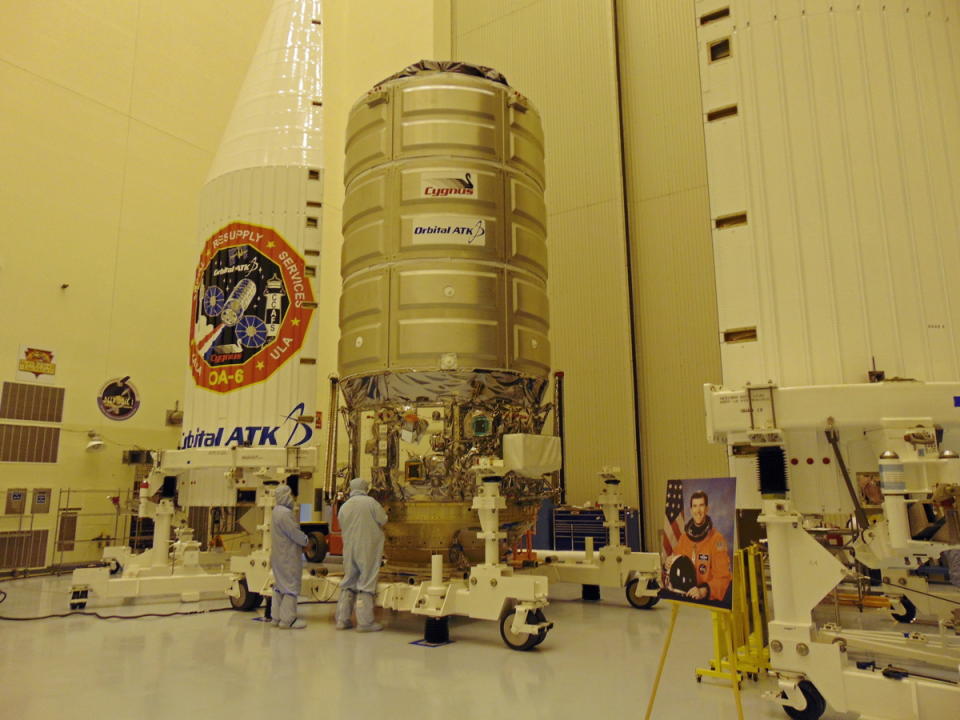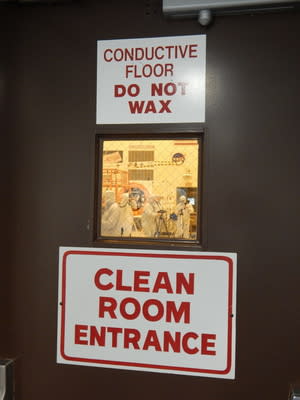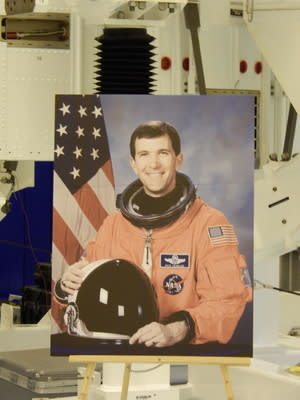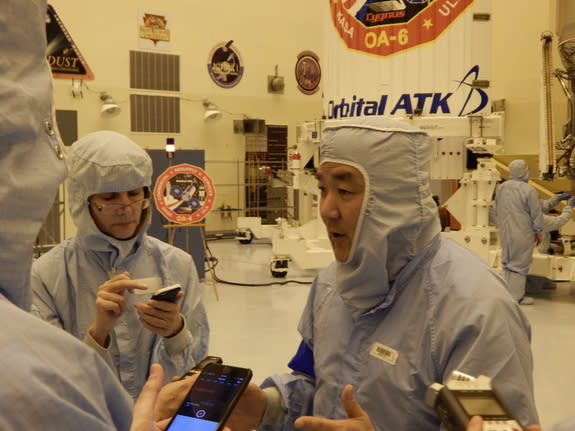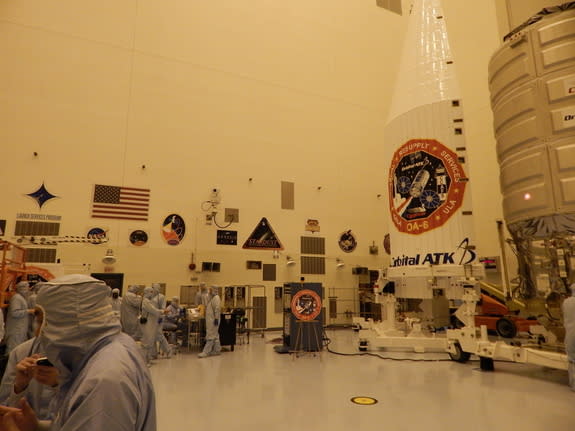Touring the Cygnus Supply Spacecraft Clean Room (Photos)
CAPE CANAVERAL, Fla. — Tucked inside the Payload Hazardous Servicing Facility at Florida's Kennedy Space Center, NASA's next cargo vehicle preps for its upcoming trip to the International Space Station. This week, one of the remaining steps before launch will be completed as crews encapsulate the Cygnus spacecraft inside the fairing that will carry it into orbit.
However, before it is sealed away, NASA invited members of the media to view the Cygnus inside its specialized clean room. The PHSF is a unique facility that all spacecraft visit before launch. Designed to serve a dual purpose, this building processes and tests payloads before launch and handles any sort of hazardous operations, such as loading liquid fuels. The PHSF high bay is a clean room, and anyone who enters has to follow a strict protocol, including wearing a special suit known as a bunny suit.
We all arrived at Kennedy Space Center's press site where a bus was waiting to transport the group. Excitement built as we arrived at our first stop of the day, where we got a briefing about the mission and the safety protocols for the clean-room visit. Representatives from NASA's Launch Services — United Launch Alliance (ULA) and Orbital ATK — were on hand to discuss the mission and answer any questions. [Photos: Orbital ATK Cygnus Spaceship's Return-to-Flight Mission]
Orbital ATK has the tradition of naming each Cygnus spacecraft after a fallen astronaut. Dan Tani, a former astronaut and current vice president of Orbital ATK's mission and cargo operations department, made the announcement that this Cygnus will be named the SS Rick Husband; this is the first Cygnus to be named for an astronaut who worked on station.
Tani described the naming process: "We had very obvious choices for the first couple spacecraft," he told Space.com. "There were people like Janice Voss, who were Orbital employees and near and dear to our hearts." Once Orbital made the decision to name the fleet after fallen astronauts, they decided to consider connections to the company as well as the astronaut's contributions.
"Thankfully, it's a relatively small list to choose from," Tani said. "Rick's name popped up pretty easily to us. He was the first to pilot the shuttle to the space station, on the same mission with Kent." Kent Rominger, a former astronaut who is now Orbital ATK's vice president of strategy and business development, was the commander of STS-96, the first shuttle mission to dock with the space station. Husband was the pilot on that mission.
Tim Kopra, an astronaut currently on the space station, and Jeff Williams, who is scheduled to join Kopra this month, both worked with Husband. "This will be a sentimental touchstone with the crew," Tani said. "The beauty of human spaceflight is it involves humans. It's a great pleasure for us to be able to honor those connections."
After the briefing, we headed to the PHSF. Once inside, everyone was instructed to first clean their shoes in a special motorized brushing machine. This removed outside dirt and other materials from our shoes. We then moved to a small area where we were given cloth booties to slip over our shoes before moving to the locker room.
The next step was to clean all our camera equipment — we were given a supply of alcohol wipes. Next, we donned the bunny suits, starting with cloth jumpsuits that were worn on top of our clothes, and then we put on two pairs of special booties each over our cloth booties. These zipped up to the knees and also covered the jumpsuit. Finally came the pièce de résistance: cloth hoods with an opening large enough for our faces.
After we were properly outfitted, we headed into an air shower a few people at a time. The air shower was in a small hallway that joined the locker room to the clean room. Everyone inside was blasted with air before we could enter the high bay.
Once inside, the silvery cargo ship towered above us, flanked by the two shells of its payload fairing. Cygnus is known for having Christmas-colored lights on its exterior, which were illuminated for us to see. Stepping through the clean-room door was like stepping into history, as this room once housed some of NASA's biggest missions. The decals of 14 space missions, including the Curiosity Mars rover and New Horizons flyby of Pluto, adorned the walls of the PHSF.
This flight marks the second cargo mission supported by ULA, and Orbital ATK's second to fly from Florida. Tani told Space.com how thrilled the company was for its progress: "After almost a year of downtime, we're happy to be ramping back up to full pace," he said. "We're very excited to see the vehicle sitting here so beautifully, ready to go to orbit."
After it is secured inside the payload fairing, the spacecraft will be turned over to ULA, and should be mated to the rocket next week. ULA will complete its final checks before launching on March 22. For its next mission, which is expected to take place this summer, Orbital plans to resume flights from its launch facilities at Wallops Island in Virginia.
Follow Amy Thompson on Twitter @astrogingersnap. Follow us @Spacedotcom, Facebook and Google+. Original article on Space.com.
Editor's Recommendations
The International Space Station: Inside and Out (Infographic)
Photos: Orbital ATK Cygnus Spaceship's Return-to-Flight Mission
Orbital Science's Antares Rocket and Cygnus Spaceship Explained (Infographic)
Copyright 2016 SPACE.com, a Purch company. All rights reserved. This material may not be published, broadcast, rewritten or redistributed.

 Yahoo News
Yahoo News 